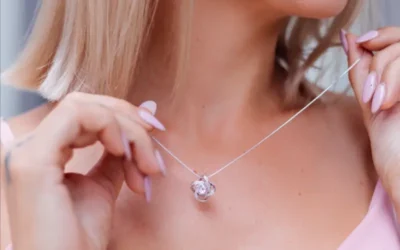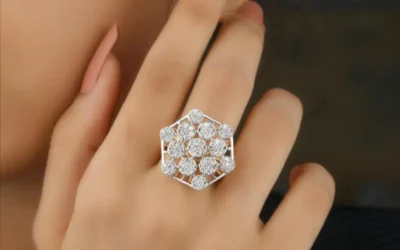It wasn’t long ago that diamonds meant deep mines, bulbous excavation equipment, and the promise of forever—at any cost.
Yet today, a seismic shift is happening in the world of fine jewelry. Millennials and Gen-Z shoppers are increasingly gravitating toward Lab Grown Diamonds, choosing stones crafted in high-tech laboratories over those pulled from the earth’s crust. What’s fueling this trend? From ethical concerns and sustainability goals to cutting-edge customization and social media buzz, younger buyers are rewriting the rulebook on what defines a dream diamond.
In this article, we’ll explore the key drivers behind this movement, debunk common myths, share real-life stories, and provide actionable tips for anyone looking to buy their first or next lab grown sparkler. By the end, you’ll understand why Lab Grown Diamonds aren’t just a savvy choice—they’re the future of fine jewelry that resonates deeply with young, conscientious consumers.
The Rise of Lab Grown Diamonds Among Young Consumers
 Over the last ten years, Lab Grown Diamonds have moved from boutique novelty to mainstream powerhouse. According to industry analysts, the global lab grown diamond market has enjoyed annual growth exceeding 20%, with projections placing it at nearly 10% of all diamonds sold by 2028. As production methods like chemical vapor deposition (CVD) and high-pressure, high-temperature (HPHT) crystal cultivation have matured, costs have plummeted—allowing quality one-carat round brilliants to retail for half the price of mined equivalents.
Over the last ten years, Lab Grown Diamonds have moved from boutique novelty to mainstream powerhouse. According to industry analysts, the global lab grown diamond market has enjoyed annual growth exceeding 20%, with projections placing it at nearly 10% of all diamonds sold by 2028. As production methods like chemical vapor deposition (CVD) and high-pressure, high-temperature (HPHT) crystal cultivation have matured, costs have plummeted—allowing quality one-carat round brilliants to retail for half the price of mined equivalents.
But affordability alone doesn’t account for the surge; it’s paired with an unprecedented level of transparency. Today’s younger buyers—fueled by online reviews, lab-to-consumer storytelling, and social media highlights—demand to know a diamond’s full story, from carbon source to jewelry box.
For Millennials, many of whom graduated college into the aftermath of the Great Recession, the appeal is double-edged: lab grown diamonds represent both a savvy financial choice and a tangible expression of sustainability values.
Gen-Z, even more digitally native, sees these stones as extensions of personal identity—platforms for self-expression through novel colors, bespoke cuts, and shareable unboxing videos. Together, these cohorts aren’t just snapping up lab grown diamonds; they’re reshaping an industry that long thrived on mystique and scarcity.
Key Motivators Behind the Shift
A closer look reveals three core motivators driving this generational pivot: ethics, economics, and the promise of endless customization.
When it comes to ethics and environmental concerns, lab grown diamonds win hands-down. Traditional diamond mining has a legacy of deforestation, ecosystem disruption, and human rights scandals. By contrast, diamonds created in state-of-the-art laboratories sidestep these issues entirely.
Powered increasingly by renewable energy, modern CVD facilities dramatically cut carbon emissions and water usage compared to open-pit mines. For Millennials and Gen-Z, adorning themselves with a lab grown stone becomes a visible badge of eco-conscious living—proof that beauty need not come at the planet’s expense.
Yet ethics alone can’t sustain a trend; quality and value matter. Lab grown diamonds match mined stones atom for atom, exhibiting identical hardness, brilliance, and longevity. Today’s lab processes yield exceptionally high clarity grades and color ranges—from icy D to vivid fancy yellows, pinks, and blues—often at 30–50% lower cost per carat.
For young buyers balancing tight budgets, student-loan debt, and high living expenses, this price differential can unlock larger carat weights or more elaborate settings without compromise. Suddenly, that two-carat emerald-cut center or halo-enhanced cathedral setting feels within reach.
Finally, customization and innovation propel lab grown diamonds into an experiential realm. Unlike their mined counterparts, which rely on chance geological processes, lab grown stones can be engineered for precise cuts, unique inclusion patterns, and even bespoke shapes. Fancy colored diamonds—once rarities commanding astronomical premiums—are now accessible through trace element doping in lab environments. For a generation that prizes personal storytelling and one-of-a-kind design, this level of creative control transforms a jewelry purchase from mass-market commodity to curated artwork.
Quality and Certification: Debunking Misconceptions
Despite their many advantages, lab grown diamonds sometimes face long-standing skepticism: Are they “real” diamonds? How can you trust their quality? The answers lie in both science and rigorous industry standards.At the molecular level, lab grown and mined diamonds are indistinguishable. Each is a lattice of carbon atoms arranged in perfect cubic symmetry, giving both types a hardness of 10 on the Mohs scale and a refractive index of 2.42.
Under a jeweler’s loupe, their brilliance and fire appear identical.Advanced spectroscopic tools can reveal tell-tale growth patterns—curved striations in CVD stones or metallic flux inclusions in HPHT diamonds—but these details remain invisible to consumers and most jewelers.
Grading lab grown diamonds follows the same Four Cs—Cut, Color, Clarity, and Carat—as mined stones, but with some nuances. Precision-guided lasers often yield superb cut symmetry and ideal light performance. Controlled growth conditions produce stones with fewer inclusions, resulting in higher clarity grades at lower price points.
Color grading spans D through K for near-colorless to warm-tone options, along with a growing range of vibrant fancy hues. To ensure authenticity, leading gemological institutes including GIA, IGI, and GCAL now issue certificates explicitly identifying origin—stamping each diamond’s girdle with a laser-inscribed report number and origin designation. When shopping, insist on a GIA or IGI report and verify that the inscription matches your paperwork; this simple step ensures you get exactly what you pay for.
The Role of Social Media and Influencers
 In the digital age, diamonds live on Instagram grids and TikTok feeds as much as in velvet-lined boxes. Social media has become the megaphone amplifying lab grown diamonds’ appeal, turning curious onlookers into enthusiastic buyers.
In the digital age, diamonds live on Instagram grids and TikTok feeds as much as in velvet-lined boxes. Social media has become the megaphone amplifying lab grown diamonds’ appeal, turning curious onlookers into enthusiastic buyers.
Instagram’s highly visual platform thrives on polished flat lays, marble tabletops, and hands adorned with meticulously manicured nails showcasing new lab grown styles. Hashtags like #LabGrownDiamonds and #EthicalJewelry boast millions of views, introducing consumers to everything from pastel-pink solitaires to industrial-chic hexagonal cuts. Short-form video tutorials—“How to Spot a Real Diamond” or “Top 5 Engagement Ring Trends”—further demystify the technology, building trust through transparency.
TikTok’s rapid-fire editing style elevates engagement rings and necklaces into shareable moments. Influencers partner with lab grown brands to deliver behind-the-scenes factory tours, revealing the alchemy of carbon-atom layering in CVD chambers and the intense pressures of HPHT presses. Viral challenges like #DiamondSwap encourage users to compare heirloom and lab grown stones side by side, showcasing identical brilliance at lower prices. Real-life proposal vlogs featuring lab grown rings—complete with emotional reactions—spark comment threads brimming with questions, driving traffic directly to vendor sites.
For both generations, these peer-driven narratives carry far more weight than impersonal print ads. Authentic endorsements from eco-influencers, fashion bloggers, and tech reviewers create a sense of shared discovery, making lab grown diamonds not just a purchase but a community experience.
Shopping Lab Grown Diamonds: What to Look For
As you navigate the lab grown diamonds marketplace, clarity of information and retailer integrity become paramount. Here’s how to shop with confidence.
First, understand that rigorous certification is non-negotiable. Every diamond you consider should come with a GIA or IGI report detailing its Four Cs and confirming its laboratory origin. Verify the report number against the laser inscription on the diamond’s girdle—an easy loupe check that guarantees authenticity.
Next, prioritize cut quality and light performance. While color and clarity are important, a precisely engineered cut ensures maximum brilliance. Look for Ideal or Excellent cut grades, which indicate that the diamond’s facets have been aligned to return the greatest amount of light to your eye.
When it comes to color, decide whether you prefer colorless (D–F), near-colorless (G–J), or fancy hues. Lab grown technology has democratized rare colors—vivid pinks, electric blues, and sunshine yellows once reserved for the world’s wealthiest collectors now fall within reach of savvy young buyers. Expect a premium for intense saturation, but know it remains a fraction of mined color prices.
Clarity tends to be a lab grown diamond strong suit, with many stones earning VS or higher grades. Still, watch for metallic flux inclusions in HPHT diamonds and confirm they meet your standards. Carat weight in lab grown stones offers remarkable value—if size is your priority, you can often step up by a full half-carat or more compared to mined options on the same budget.
Finally, choose retailers whose practices reflect your priorities. Brands like GLARINS excel by bundling transparent all-in pricing (stone, setting, and certification), generous return windows, and lifetime warranties. Virtual try-on tools and one-on-one consultations—whether by video call or in showroom appointments—help you visualize your purchase before commitment. When you find that perfect lab grown diamond, you’ll know it has passed every test of quality, value, and integrity.
Real Stories: Testimonials from Millennials & Gen-Z
Statistics and technical details lay the groundwork, but it’s personal experiences that truly illustrate why lab grown diamonds have captured young hearts.
Emily, a 29-year-old graphic designer, recalls scrolling through Instagram when she saw a pink lab grown solitaire that stopped her in her tracks. “I’d always dreamed of a pink diamond but assumed it was out of reach,” she says. “When I learned I could have a two-carat fancy pink for under $8,000, I felt like my values and my style finally aligned.”
For Aiden, a 32-year-old software engineer, the story was budget-driven but no less meaningful. He saved for months to propose to his partner and wanted a stunning 1.5-carat emerald cut. “Mined diamonds in that size were astronomical,” he explains, “but the lab grown alternative let me create a ring that felt bespoke, without the guilt or the debt.”
Sophia, a 25-year-old marketing coordinator, chose a yellow lab grown drop necklace to celebrate her five-year work anniversary. “It was a gift to myself,” she laughs. “Seeing that warm, sunny color every morning reminds me how far I’ve come—and that I can reward myself on my own terms.”
Climate activist Serena, aged 22, emphasizes the social impact. “I wear my lab grown studs as a conversation starter,” she says. “They open talks about sustainability, labor rights, and mindful spending. It’s more than jewelry—it’s a symbol of progress.”
Each of these stories underlines a shared truth: Lab Grown Diamonds do more than dazzle—they empower. They let young buyers celebrate life’s milestones in harmony with their convictions.
The Future of Diamonds: What’s Next?
 As we look ahead, the lab grown diamond sector shows no signs of slowing. Technological leaps promise faster growth cycles, novel shapes, and even “smart diamonds” embedded with micro-chips to guarantee provenance via smartphone scanning. Researchers are experimenting with 3D-printed molds that could yield fully formed diamond clusters—imagine entire floral arrangements grown as single crystals.
As we look ahead, the lab grown diamond sector shows no signs of slowing. Technological leaps promise faster growth cycles, novel shapes, and even “smart diamonds” embedded with micro-chips to guarantee provenance via smartphone scanning. Researchers are experimenting with 3D-printed molds that could yield fully formed diamond clusters—imagine entire floral arrangements grown as single crystals.
Meanwhile, consumer values continue evolving. Gen-Alpha—the cohort born after 2010—will expect real-time tracking of each diamond’s journey, live-shopping experiences via social platforms, and deeper brand engagement through storytelling that highlights carbon-neutral operations and community reinvestment. Brands that meet these demands—combining technological innovation with authentic narratives—will shape the next chapter of fine jewelry.
In this brave new world, Lab Grown Diamonds will remain the lodestar for luxury that’s ethical, affordable, and endlessly expressive.
Conclusion & Call to Action
The choice between mined and lab grown diamonds may once have hinged on tradition or prestige. Today, it hinges on purpose, creativity, and value. For Millennials and Gen-Z, lab grown diamonds offer every bit of the sparkle, quality, and heritage associated with classic stones—plus a clear conscience and room in the budget for bigger, bolder designs.
Ready to make a statement that reflects your values? Explore GLARINS’s curated Lab Grown Diamonds collection, complete with GIA/IGI certification, lifetime warranties, and transparent pricing. Sign up for our newsletter to receive early access to new color releases, virtual styling events, and exclusive savings. Because the future of diamonds isn’t just bright—it’s brilliantly sustainable.






